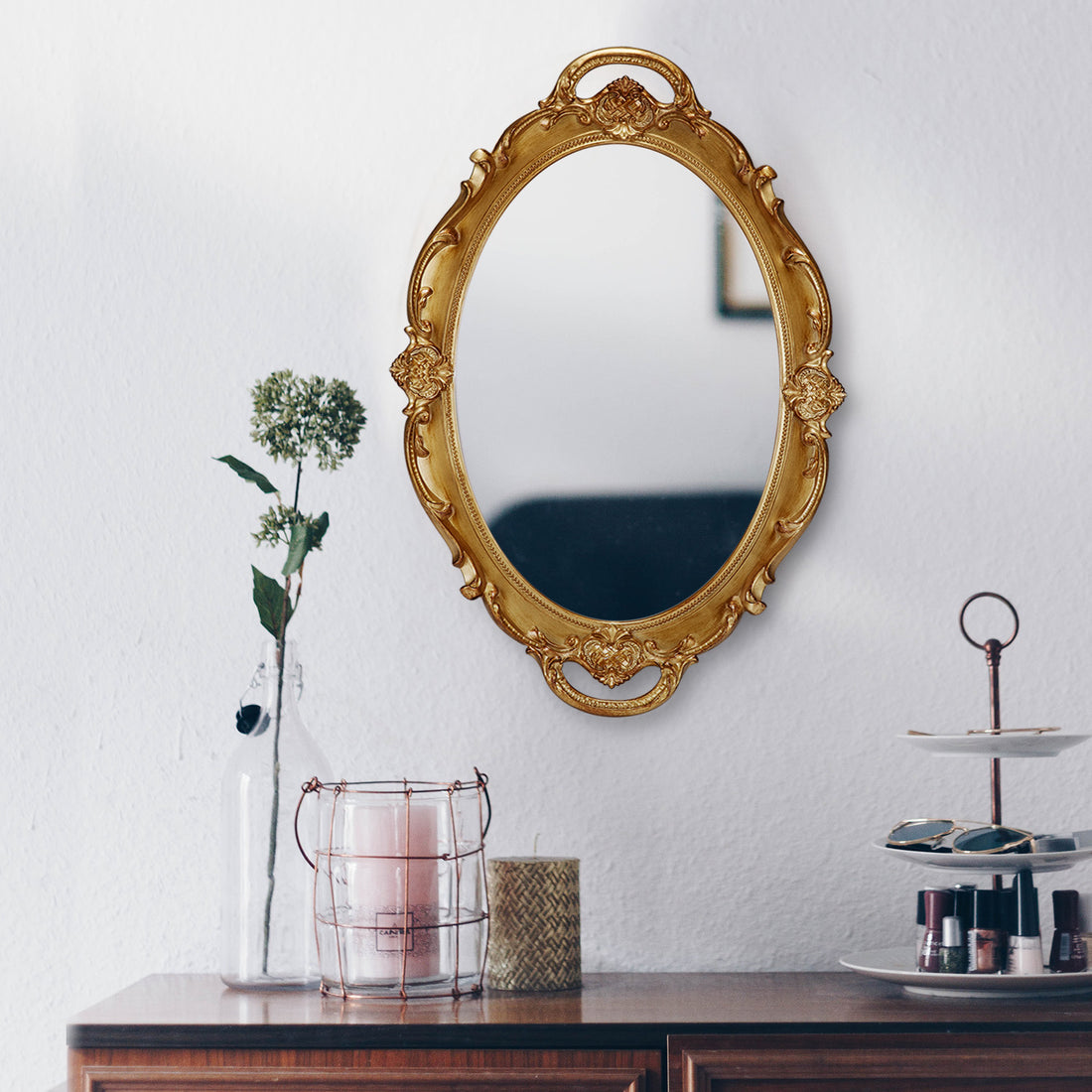Most homes are composed of different types of furniture, walls, frames, and other decorative elements, however, there is nothing like an antique mirror to make a room complete. Mirrors are one of the most multi-functional decorative pieces beyond their utilitarian function of looking at one’s appearance. While they are often known to be a common object in everyone’s life, they have a rich and fascinating history, making antique mirrors one of the most sought out artifacts amongst many homeowners.
People often think of their heirloom furniture, including mirrors, as priceless. They are considered valuable pieces due to the history it has through the various generations it has survived. But the truth is, not all mirrors that appear old are actually antique. Most experts require a piece to be at least one hundred years old or made before mass manufacturing to be labeled as a genuine antique.
Before the invention of mirrors, historians believe people would check their reflections in pools of water. Humans then created some of the first mirror-like objects by polishing stones to create a flat and reflective surface. Some ancient civilizations made use of polished metals to produce a similar effect. Others used metal-black glass mirrors, similar to the ones we make use of today.
One of the clear signs to determine if a mirror is old is by observing the glass. The more flaws the glass has, the more likely it is an antique. Fortunately, through time and the advancement of technology, manufacturers developed the ability to create precise, flawless, and smooth mirrors. Another well-known advancement was the invention of glass blowing, although this was strictly reserved for the wealthy back in the day. A distinctive style was the Venetian Renaissance mirror, which had a coating on one side of the glass with tin and mercury. Eventually, metal-black glass mirrors were set out for mass production and is now considered to be a staple in middle-class households.
With their ornate frames, beautiful coats, dark edges, a tarnished appearance, and distressed patches, antique mirrors can surely transform the style of any space. Modern designers even go the extra mile to make mirrors look antique because the appearance of an old mirror will never go out of style. If your home is decorated in a vintage or Victorian style, these pieces can fill the area with glamour and make other pieces do double-duty. Your bedroom, bathroom, kitchen, or even your hallway, can benefit from them as well.

Antique mirrors are not simply designed to add decorative touches to an interior, but they are also ideal for making your space feel larger and brighter, especially for those areas that need a little extra light. Whether you are looking for a decorative or functional piece, you may be surprised to find several styles and types of antique mirrors on the market. Throughout history, each type of mirror was designed to keep up with the trending styles of a certain period.
Gothic Styled Mirrors: These mirrors were popular during the 12th to the 16th century. They are considered to be more intricate than Baroque-styled antique mirrors, although they do not feature any gliding. Instead, this style of mirror resembles church windows in an oval shape and features ornate scrolling and carvings, with pointed arches at the top. This style eventually made a comeback in the 19th century and was popularized during the Victorian Gothic era.
Baroque Styled Mirrors: This style is from the 17th century and can be identified through its silver or gold gliding. It was popular to find ebony and tortoiseshell inlays with ornate carvings featuring fruits, feathers, angels, flowers, and leaves.
Rococo or Late Baroque Styled Mirrors: This was popular during the 1730s to the early 1800s. This style is usually made in a rectangular shape or a cathedral shape, which is an oval with a flat bottom. They are also made in symmetrical moldings and heavy sculpted plastered frames in gilded gold. You may find natural items such as flowers, leaves, feathers, and seashells carved, but mostly at the top of the mirror. Some even feature decorative paintings on the back portion of the mirror itself.
Georgian Styled Mirrors: This era took place in Britain around 1714 to 1830. This style featured little to no ornamental decoration since it lacked elaborate carvings, aside from perhaps the top edge of the frame. The designs for this type of mirror were usually symmetry, scrolls, and beading. Even so, Georgian decorations at the type merely focused on geometric and symmetry pieces.
Neo-Classical Style Mirrors: This style of mirror was booming during the mid to late 18th century, wherein it mimicked columns and medallion carvings around the top portion. They mostly come in rectangular or cathedral shapes, and commonly have frames that are gilded with silver and gold.
Regency Styled Mirrors: Regency mirrors were popular in the early 1800s. They also featured gliding by making use of natural mahogany, but with significantly slimmer oval frames as compared to other styles. They also feature columned frames, flowers or leaf designs, friezes and cornices, and natural iconography.
French Style Mirrors: French mirrors were found in the early 19th century. Its style is considered simple and less lavish in terms of its molding, but more geometric in shape. They feature columns, paneling, and hand beveled designs. You would often find them hanging above the chimney as a statement piece.
Antique mirrors come in all shapes and sizes. They also have countless styles to compliment any kind of interior, which can also serve as a statement piece. Not only were these frames a great addition for homes centuries ago, but they are even better for the modern home in the present day. If you find original antique pieces to be too pricey for your budget, then you can enjoy the same beauty for a fraction of the price with inspired pieces. You can opt for silver or gold gilt finishes, as well as cherry, ash, and wood finishes.
Copyright © 2021 Omiro. All rights reserved.






